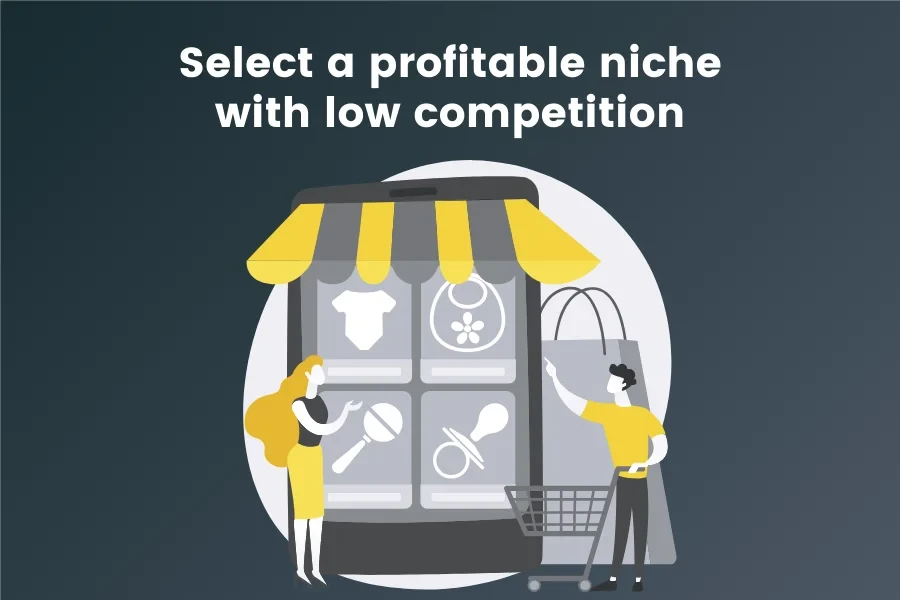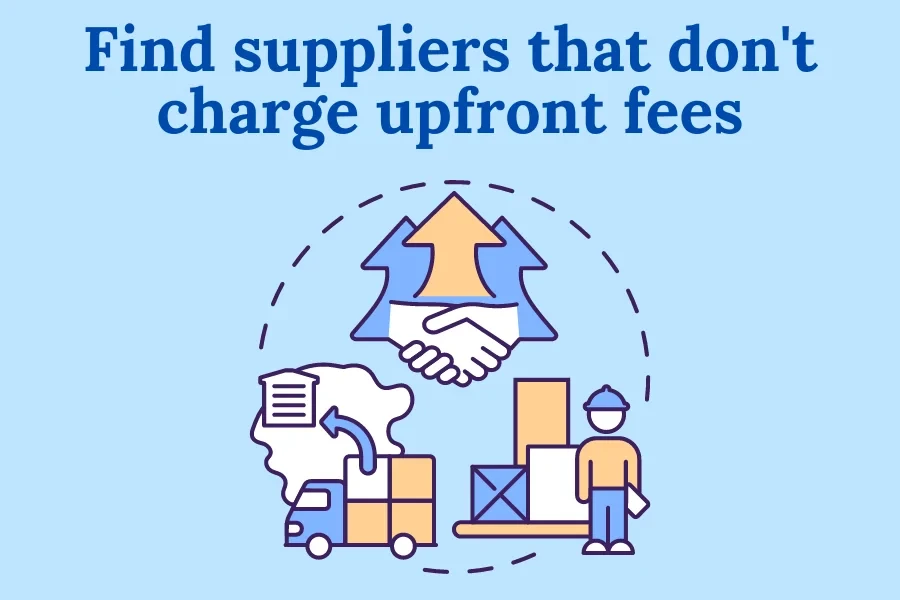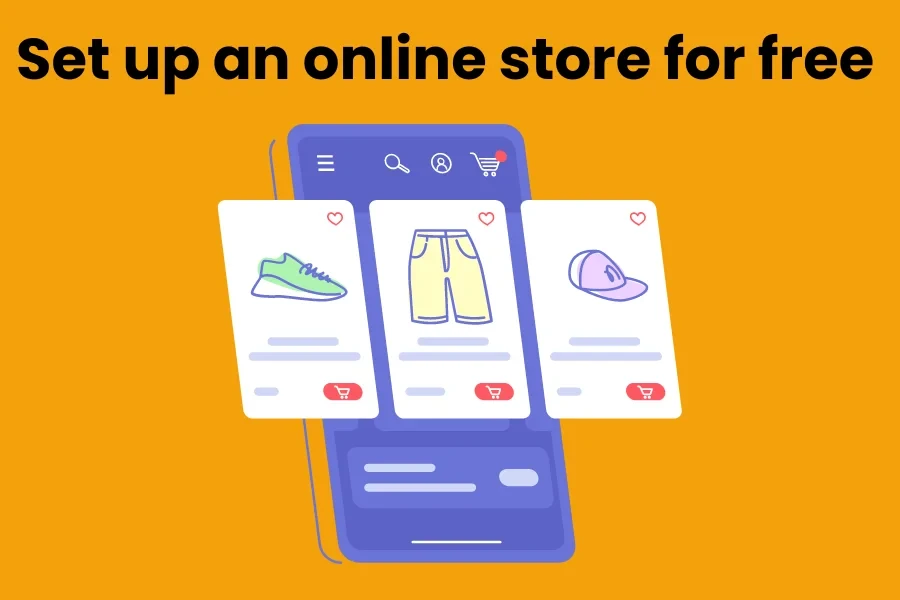Dropshipping is an attractive low-investment model for small-sized entrepreneurs and businesses. Instead of having a brick-and-mortar retail store and storing products on stacked shelves, dropshippers purchase items from a third-party supplier and ship them directly to customers. There is no need to manage inventory, and the business can be run from anywhere. You just need an internet connection.
However, although dropshipping has a low barrier to entry, beginners find themselves challenged with some upfront investments and running costs. After all, even without a physical warehouse, dropshippers still need to create an online store and launch marketing campaigns. Continue reading to learn 4 zero-expense hacks on how to start a dropshipping business with no money!
Table of Contents
1. How to start a dropshipping business with no money: 4 hacks
2. Start dropshipping with no money, but scale up later!
How to start a dropshipping business with no money: 4 hacks
Below are four proven, no-cost strategies to start dropshipping without spending any money.
1. Select a profitable niche with low competition

It’s a no-brainer for dropshippers on a low budget to choose a niche with a higher volume of sales. However, the downside of a profitable niche is its vicious competition. So, when looking to start a dropshipping business with no money, it’s important to find a niche that has:
- Consistent demand from a sufficiently large customer base;
- Products that leave good profit margins (e.g., high-ticket items like jewelry and fashion clothes);
- Easier entry with few competitors (💡Pro tip: it’s preferable to choose a market with few to no big brands, even if it has many small competitors. It’s easier to build brand loyalty in the absence of big players).
i. How to find trending products
So, the first question is how to find products that sell fast and have a broad audience base. Thankfully, there are many free tools to conduct market research, including:
- Google Trends;
- Social platforms and groups (e.g., Facebook, Instagram, and Reddit);
- Featured products on online marketplaces (e.g., Alibaba.com and AliExpress.com);
- eBay Watch Count.
Check out these 10 free ways to find hot trending products without wasting a single dime.
ii. How to identify and analyze competitors
After choosing which products to go for, it’s important to know what the competitors are doing (you don’t want to end up stuck in a saturated niche market). Moreover, conducting competitor analysis reveals which pricing tactics and marketing strategies you should use later. Here are some tools to identify competitors and analyze their strategies:
- Ad libraries: This is a free way to see what kind of ads competitors are running on social platforms like Facebook, Instagram, TikTok, and X.
- Visualmap: This is a great tool to monitor the changes made by competitors on their online stores. You can see how they change their UX to attract and retain visitors. It’s also possible to keep an eye on the pricing page of competitors.
- Mailcharts: This tool contains a vast email and SMS marketing campaign library. You can study how competing brands are tweaking their ad copies and which marketing automation techniques they use.
For more details, check out this list of 8 competitor analysis tools. Many of them offer free trials or basic freemium plans.
2. Find suppliers that don’t charge upfront fees

Once you have your niche products in mind, you can start selling them to your customers without physically handling them. For example, a customer places an order and pays you USD 200 (retail price); in turn, you forward the order to the supplier and pay USD 120.
This way, you end up shipping the product to the customer without paying for it upfront (and on top of that, you keep a profit of USD 80). This is why beginners can start a dropshipping business with no money. However, some suppliers might charge additional fees to dropship their products.
For instance, they might ask for setup fees to integrate their order fulfillment system with yours. Other suppliers might even require a minimum monthly fee (or a minimum number of orders per month or quarter) to provide continued access to their inventory and ordering services.
Thankfully, there are many free online directories where dropshippers can find suppliers that offer competitive pricing and don’t charge upfront costs or minimum fees:
i. AliExpress’s dropshipping marketplace
AliExpress is a B2C marketplace offering vast product selection across various niches. Most suppliers on AliExpress have extensive dropshipping experience and don’t charge any upfront fees or membership costs.
Moreover, there is no minimum order quantity (MOQ). It’s worth noting that many AliExpress suppliers offer “ePacket shipping,” which allows customers in developed countries to track and receive their orders in just a few weeks.
ii. Alibaba.com’s dropshipping marketplace
Alibaba.com is one of the largest B2B marketplaces in the world, featuring millions of products from over 200,000 leading suppliers. While Alibaba.com is known for wholesale, the platform recently launched a dropshipping center where businesses can find millions of products from Verified Suppliers that sell without a MOQ requirement.
Signing up and connecting online stores to Alibaba.com’s dropshipping center is free. Once the store is connected, dropshippers can import products in bulk from Alibaba.com with a single click and use many automation and tracking tools for free. Here is a comparison guide of Alibaba.com vs AliExpress to help you determine which one is better for your dropshipping business.
3. Set up an online store for free

Dropshipping, like any e-commerce business model, requires an online store. After all, dropshippers need a website to list their products, automate order fulfillment, and interact with customers. Most beginners use Shopify to create their dropshipping store. However, the pricing of the basic plan starts from USD 32/month (although you can get the first month for only USD 1).
Luckily, there are many free alternatives to setting up an online store (and you can control everything related to your store as an added benefit). Let’s explore some of these free options:
i. WooCommerce
WordPress is a free, open-source platform that lets you create websites from scratch. It has a friendly interface with thousands of themes and plugins to add all the functionalities you want to your website. One of these free plugins is WooCommerce, which can be installed on any WordPress website.
With WooCommerce, you can import products to your store, add payment gateways, and automate the entire dropshipping process. In addition to all these features, WooCommerce has comprehensive documentation and a large community of developers and users. You can quickly learn to use most of WooCommerce’s capabilities.
ii. Ecwid
Another free alternative is Ecwid. This e-commerce platform offers a free “Instant Site” plan that allows you to create a one-page store and start selling right away quickly. With this platform, you can customize the design of your online store without knowing how to code a single line.
While the free plan will enable you to add only 10 products to your dropshipping store, it does not charge any transaction fees for your sales. Moreover, you can integrate a variety of payment gateways and configure basic shipping options for your customers.
iii. PrestaShop
PrestaShop is another open-source platform that offers a free plan to set up an e-commerce store. Dropshippers can use the customizable PrestaShop themes to design the lookout of their landing page, checkout page, and pricing page. Moreover, it’s easy to manage product listings, track inventory, and integrate various payment methods (PayPal is built-in at checkout as an added bonus).
The free plan also includes analytical and marketing tools. To add a cherry on the cake, PrestaShop’s large community provides various free extensions to customize the dropshipping store with more automated functionalities.
Regardless of which free platform you choose to set up your dropshipping store, you still need to pay for domain registration and web hosting. However, as a starting point, you can use free web hosting providers like 000WebHost, InfinityFree, and AwardSpace. But as you scale up, you will eventually need your own web hosting. For the domain name, check out these 3 legit methods to get one for free.
4. Attract customers with free advertising strategies

Now that the online store is all set up and running, it’s time to get some online visibility. Without customers, there are no sales; without sales, there are no profits. This is why advertising and marketing are the biggest expenses in dropshipping.
Thankfully, running ads on social media platforms is not the only way to attract potential customers to your dropshipping store. Here are two free strategies to reach your target audience:
i. SEO (Search Engine Optimization)
Dropshippers can increase organic traffic to their website by using SEO techniques. This strategy is about making your online store visible to customers when searching for products on search engines like Google or Bing. Here are some SEO tactics that you can use to attract potential customers through search engines:
- On-page SEO: You can optimize individual pages on the store by tweaking factors such as page titles, meta descriptions, URLs, and images. For instance, you can get more traffic by inserting properly the main keywords in the product descriptions. Learn how to get free traffic by optimizing product copies.
- Off-page SEO: This tactic concerns everything you do away from your online store to increase its ranking on search engines. The goal is to increase the authority of your domain through backlinks, brand mentions, influencer outreach, and participation in relevant forums.
- Content marketing: Dropshippers can increase SEO traffic and turn visitors into loyal paying customers by creating high-quality content that is unique, valuable, and relevant. For instance, if you are selling organic cooking ingredients, writing nutritional guides or posting videos on how to bake gluten-free recipes is a good idea.
ii. Free social media marketing
Pay-per-click (PPC) and pay-per-view (PPV) are not the only ways to advertise your products on social media platforms. Dropshippers can get free social media traffic by engaging with their audience through social media pages and groups.
a. Social media pages
A free way to boost the visibility of your dropshipping brand is by creating pages on social media platforms like Facebook and Instagram. But social media pages are not just for showing off eye-catching photos and videos of your products.
Your page can be a great tool to establish authority and build brand loyalty by teaching the audience something related to your niche. For example, if you sell home fitness equipment, you can create a post series about 10 effective home workouts that beginners can do with resistance bands.
b. Social media groups
Another way to engage with potential customers is through social media groups. First, identify where your target customers are most active. Search for Facebook or Pinterest groups that are related to your dropshipping niche. Try to be an active member by sharing insights, how-to guides, and other valuable content.
Once you have an established presence, you can share exclusive discounts or special offers for group members. It’s also a good idea to run contests or giveaways in return for participants following your page, liking your posts, and inviting their friends to do the same.
These are not the only methods to generate free traffic to your online dropshipping store. Here are 13 other strategies to promote online visibility for your dropshipping business. Also, don’t forget to take a look at these 10 dropshipping marketing strategies!
Start dropshipping with no money, but scale up later!
These four money-saving strategies are a great starting point for beginners looking to learn how to start a dropshipping business with no money. However, reinvesting profits will be necessary as the business grows and scales.
Eventually, dropshippers will need to invest in a decent hosting server to manage the increasing incoming traffic to their online store. They must also launch paid advertising campaigns to keep sales growing consistently. Dropshippers must ultimately invest in their business brand to establish their online presence and improve customer loyalty.
Feeling the urge to start dropshipping for free? Here are 9 easy steps to kickstart your dropshipping business. Use the freebie tricks we saw earlier to keep your upfront investments near zero dollars!



